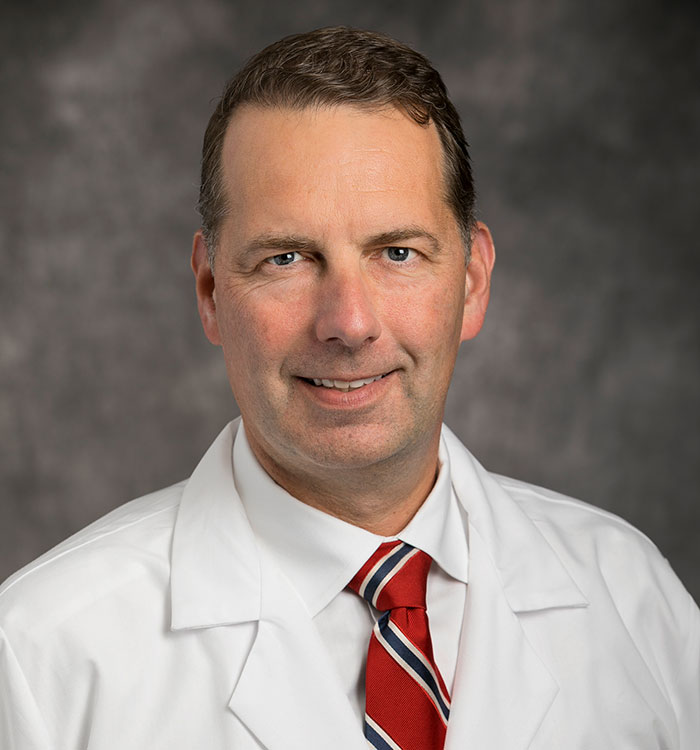New Chief of Cardiac Surgery Named for UH Cleveland Medical Center
November 24, 2019
His specialties include minimally invasive valve surgery, TAVR and coronary bypass surgery
Innovations in Cardiovascular Medicine & Surgery | Fall 2019
 Marc Pelletier, MD, MSc, FRCSC
Marc Pelletier, MD, MSc, FRCSCMarc Pelletier, MD, MSc, FRCSC, has joined University Hospitals as Chief, Division of Cardiac Surgery, UH Cleveland Medical Center, and Director, Heart Surgery Center, UH Harrington Heart & Vascular Institute.
Dr. Pelletier joins UH from Brigham and Women’s Hospital and Harvard Medical School in Boston, where he served since 2016 as surgical director of the TAVR program. Prior to this role, he spent nine years as head of cardiac surgery at the New Brunswick Heart Centre in Canada. Before that, Dr. Pelletier was a surgeon and an assistant professor at Stanford University.
Dr. Pelletier trained at McGill University in cardiac surgery and Stanford University in cardiothoracic transplantation and ventricular assist devices. His areas of specialty include TAVR procedures, minimally invasive valve surgery, aortic valve and aortic root surgery, surgery for heart failure and minimally invasive coronary bypass surgery.
He has authored more than 70 peer-reviewed publications, with over 100 abstracts accepted at scientific meetings and participated in more than 100 invited and local talks. Dr. Pelletier was also chair of the Royal College of Surgeons of Canada’s examination board in cardiac surgery from 2014 to 2018 and in 2018 received the Larry Cohn Outstanding Teacher Award for surgical education.
We sat down for a conversation with Dr. Pelletier as he begins his tenure at UH and UH Harrington Heart & Vascular Institute.
Q: What attracted you to UH?
A: UH has grown so much over the last 10 years to encompass more than a dozen hospitals. I love the fact that as a system, we can concentrate care in tertiary care centers for sub-specialized care, but that patients can get really good local care at one of the many UH community hospitals. They can be treated there for the majority of what they need, but if they need an advanced procedure like a heart transplant, they can be referred to the appropriate place. I also see in Dr. Marco Costa, President of UH Harrington Heart & Vascular Institute, and Dr. Dan Simon, President of UH Medical Centers, a big vision for how to take care of people in Northeast Ohio, with an opportunity to take an already-strong, well-respected team and be part of its growth.
Q: What are your goals for cardiac surgery at UH?
A: Our biggest goal is to maximize quality. We've had a really big rise in volume, and we’ve maintained a good level of quality with that. Our focus now is on making sure that quality is at the highest possible level provided in any cardiac surgery program in the country. That’s multifactorial. Quality means that we need to offer some newer procedures to appropriate people, whether it’s minimally invasive surgery or promoting the growth of our TAVR program. It also involves increasing the number of heart transplants that we do and the number of mechanical support devices that we utilize. This year, we’re projected to have our highest number of heart transplants in many years. Part of it is also coordinating where surgery should be done. As a result of this, our program will continue to grow in national prominence.
Q: What’s one of the biggest issues or challenges in cardiac surgery today?
A: One of our biggest challenges and opportunities is dealing with a specialty that has become less and less invasive. It’s of great benefit to patients, but with that comes tremendous patient demand. One of our challenges is providing that care in a timely manner and deploying the resources necessary to do these procedures. The areas of growth for us will be on the TAVR side – we’re going to perform approximately 400 TAVR cases this year. We’re likely to see a significant increase over time with MitraClip and other mitral valve procedures.
Q: America continues to deal with the opioid crisis. You’ve done some research on how it touches cardiac surgery. What have you found?
A: I’ve been interested in looking at the role of cardiac surgery in the opioid crisis and whether we’re contributing to it in any way. So far, we’ve found that 5 to 10 percent of cardiac surgery patients are still taking some opioids six months after their operation. To address this, we’ve already started to a look at a comprehensive post-operative management schedule called Early Recovery After Surgery (ERAS). One of its components is a multimodality approach to deal with patients’ pain, one that doesn’t rely solely on opioids, but looks at nerve blocks, IV Tylenol and anti-inflammatory agents to make patients more comfortable and do so by using fewer opioids. We have to take responsibility. As a profession, we have to understand what our role is in the opioid crisis so that we can change what we’ve been doing.
For more information about Dr. Pelletier and the cardiac surgery program at UH, please call 216-553-1439 or email HVInnovations@UHhospitals.org.


